Here’s a list of games I’ve Com-PETE-d in the above-mentioned calendar year.
So – what constitutes “Com-PETE-ion”? All Achievements/Trophies, where available, is a bare minimum; the aim is to fully experience what the game has to offer (from at least an asset perspective). DLC is required in almost all cases – the commitment is to the game as a whole.
Last year I attempted to remove monthly goals from my gaming – previously, I had aimed to Com-PETE up to three games a month. The end result of that was unexpected – I wound up hitting over *four* games a month, and actually ended on one game per week for the year! Unintended, but welcome.
This year? All I want to do is push the average age of The List forward. It’s currently 30 May 2014 (with the median at 16 Aug 2016, a difference of 809 days), so getting those two closer together – and closer to the present – would be awesome.
(End-of-year edit: success! Average is now 21 Sep 2014, Median is now 15 Sep 2016, Difference is 725 days.)
- Mon Amour (Switch)
- Mon Amour (PC)
- Obduction (PC)
- Electroplankton (DS)
- Manifold Garden (PC)
- Outer Wilds (PC)
- Outer Wilds (Xbox One)
- Heaven Will Be Mine (PC)
- Human: Fall Flat (PC)
- Astro’s Playroom (Playstation 5)
- The Mummy Demastered (Switch)
- The Pathless (Playstation 5)
- Psychonauts 2 (Playstation 4)
- Samorost 2 (PC)
- Aquaria (PC)
- Ori and the Blind Forest (Xbox One)
- Tunic (PC)
- Cricket Through The Ages (Apple Arcade)
- Guildlings (Apple Arcade)
- Bastion (PC)
- What The Golf? (Switch)
- Ellipsis (PC)
- Sky: Children of the Light (Switch)
- HitchHiker (PC)
- LEGO Builder’s Journey (PC)
- Transistor (PC)
- Maneater (Xbox One)
- The Longest Journey (PC)
- Metroid Prime (GameCube)
- There Is No Game: Wrong Dimension (PC)
- holedown (iOS)
- Air Forte (PC)
- Bugsnax (Playstation 5)
- Below The Ocean (PC)
- Hellblade: Senua’s Sacrifice (PC)
- CARRION (PC)
- Sable (PC)
- Superliminal (PC)
- Yoku’s Island Express (Xbox One)
- Nintendo Labo – VR Kit (Switch)
- Adios (PC)
- Immortality (PC)
- The Legend of Zelda – A Link Between Worlds (3DS)
- 7 Billion Humans (PC)
- Eliza (PC)
- Stray (Playstation 4)
- Before Your Eyes (PC)
- Vampire Survivors (PC)
- Kirby: Planet Robobot (3DS)
- Stray (Playstation 5)
- The Looker (PC)
- Little Inferno (PC)
- Baba Is You (Switch)
- BOXBOY! + BOXGIRL! (Switch)
- Nuclear Blaze (PC)
- Recompile (PC)
- Narita Boy (PC)
- Frog Detective 3: Corruption at Cowboy County (PC)
- Tinykin (Playstation 5)
- The Gunk (Xbox One)
- Amnesia: The Dark Descent (PC)
- Tunic (Xbox One)
- The Artful Escape (PC)
- Toem (PC)
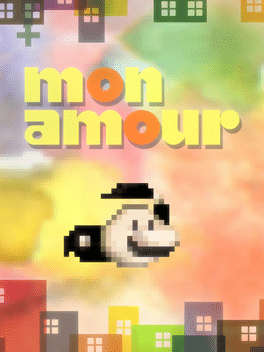
Mon Amour
Bearing a striking similarity to Flappy Bird’s mechanics (though apparently being more directly inspired by a mini-game in Onion Games’ Moon), Mon Amour is a one-button action game spread over 50 levels. Each level takes about 10-15 seconds to play, if that, and there’s a wealth of “collectibles”.
But MAN does this pack in the humour! Onion Games really have a *style*, both graphical and narrative, and it totally works. Mon Amour’s conceit is that you’re trying to “kiss” the character at the end of each level, chaining them up, using them for protection, and rescuing them after every tenth level. But the scraps of “narrative” embedded in the game are hilariously odd, and for the few hours it takes to beat Mon Amour you’ll be grinning like a loon.
I liked Mon Amour so much that I Com-PETE-d it on both the PC and Switch. Thoroughly recommended!
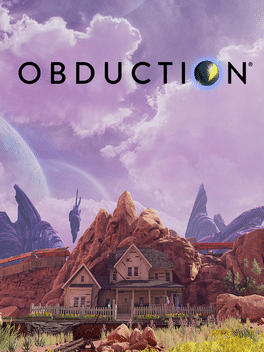
Obduction
So – one summer holidays at uni, I borrowed a copy of Myst from the local Apple User’s Group. New Year’s Eve, being all by my lonesome, I decided to fire it up at about 9pm. At 10pm on New Year’s Day, I blearily completed it… and that remains the most intense single-sitting gaming session I’ve ever done.
Obduction didn’t quite hit the same heights as Myst, but it was super-compelling while it lasted. Sure, I had to resort to a guide twice (and once again to determine whether something I was contemplating was required or not), but Myst required no guides. Not that there *were* any guides back then.
Anyway, Obduction: great story, cringey “acting”, mostly satisfying puzzles, and very pretty to look at. Recommended, if you’ve got some positive Myst memories.

Electroplankton
I love music, and I love creative things, but I don’t have a creative bone in my body. My digital receipts are littered with the evidence of many musical creation tools, most of which go completely under-used; my old 32-bit iPad hangs around, hoping that one day I’ll finally get around to trying out SoundGrid or GlitchMachine. Deep down inside, we know it’s not going to happen, but even deeper down inside is a tiny shred of hope.
I picked up a nice little Japanese import of Electroplankton (new, and complete with snazzy blue headphones) waaaaay back in the day, hoping that it would facilitate some creative explorations, and driven by the confidence in creator Toshio Iwai’s pedigree. In the decade(-plus) since, I’d regularly tinkered with all ten of the Electroplankton within, with easily distracted results.
But at the end of 2021, I decided it had to come off The List. I sat down, read all the documentation, looked around for examples of other people’s creations, and earnestly tried to compose with my ‘plankton. But it’s nigh-on impossible to take Electroplankton seriously in the 2020’s when you consider the tools that are available on modern phones and tablets; as a creative tool, then, it’s defined by the limitations that it inherently applies on the process.
And, sadly, those limitations are simply too crunchy to be of benefit. Varvoice is almost anaemic in its sound processing, Trapy & Lumiloop & Sun-Animalcule & Nanocarp have some simple rhythmic elements that become frustrating all-too-soon, and Nanocarp & Marine-Crystals also feel like effort far outweighs the reward. Beatnes has some cool sound sets and rhythms, though, and Luminarrow has the ability to create and manipulate some cool beats. The winner, though, is Hanenbow: undeniably the most fiddly of the Electroplankton, it’s also capable of creating some surprisingly complex and satisfying rhythms.
It’s still possible to see how this would have been an compelling curio at the time of its release… but, in 2022, Electroplankton is pretty hard, and largely unrewarding, work.
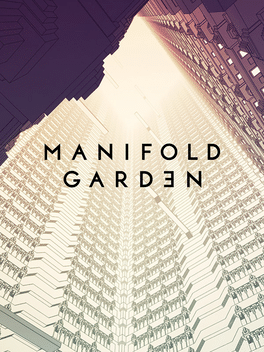
Manifold Garden
Phwoar – this is a great little puzzler. It’s pretty straightforward – no guide required to finish it! – and visually stunning, with gorgeous non-Euclidean spaces rendered with striking line art. Moody audio helps the vibe, and it’s an addictive experience that was interrupted only by my need to sleep on a puzzle.
The “No God Cube” run required for Com-PETE-ion, though? Completely non-trivial, but super satisfying.
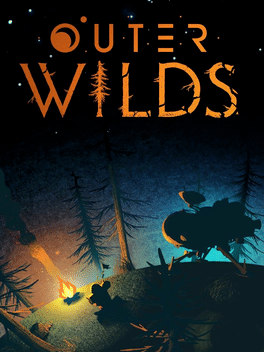
Outer Wilds
I played Outer Wilds on the Xbox back when it was released… after a slow start, it became one of my two favourite games of the last decade (Breath of the Wild being the other). I was thrilled that it won Giant Bomb’s GOTY in 2019, despite Jeff’s protestations (though I shudder to think what would’ve happened if it had been released in 2021 instead).
I wanted to throw more money at Mobius Digital, so I picked up Outer Wilds on Steam. And whilst you can only experience the joy of discovery once, it was still super-fun playing through the game again… yes, even flying to the Sun Station.
It’s still one of the best games of the decade.
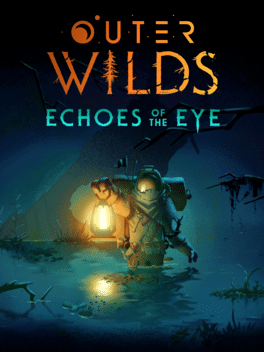
Outer Wilds: Echoes of the Eye
It’s a massive disservice that this stunning story is regarded as “DLC”; it’s quite possibly the only DLC I’ve played that holds its own compared to its original game. Whilst I really dislike stealth horror (or stealth hyper-tension), the underlying narrative of Echoes of the Eye is wonderfully weaved into the original, and it’s still an incredible experience learning all that is new in the DLC. Utterly gorgeous.
Completed both Outer Wilds and Echoes of the Eye on both Xbox and PC… all Achievements, fully filled out ship log, and complete set of endings. Extra credit: the (cheeky) 1/900 run both with and without the lantern(!), and the bonus complete lantern test slideshow reel.
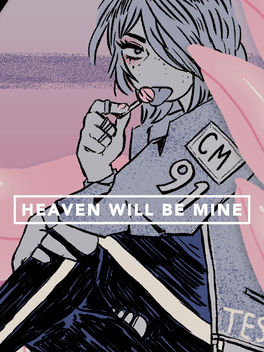
Heaven Will Be Mine
Within fifteen minutes of starting Heaven Will Be Mine, I knew it wasn’t going to be for me. I suspect the target audience for this visual novel are thirty years younger – and a different gender – than I. The science-fiction elements of the narrative(s) were enjoyable, but I felt like I had an allergic reaction to every line of dialogue… eyes rolled, skin crawled.
Can totally see how this game would be revered by the right audience, though.
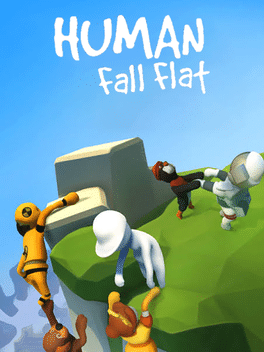
Human: Fall Flat
Feeling in the mood for something a little light and fluffy, I decided to fire up Human: Fall Flat to see if it would fit the bill. The floppy rag-doll physics, combined with the sticky-hand mechanic, was certainly silly good fun initially…
…but then came the rest of the game. And I discovered that I never really had faith in the physics model: too often, I spent half-an-hour setting up an elaborate (potential) puzzle solution, only to have that idea scuppered by some squirrelly physical interaction. And that just felt disrespectful of my time, making me want to mainline the game. The fact that additional levels – with additional Achievements – appear every couple of months only continues to irritate… thankfully, these are usually only an additional hour of work.
Still, there were some genuinely fun moments in some of the Achievements, but Com-PETE-ing Human: Fall Flat left me with a “thank god THAT’S over” feeling, rather than “more more MORE!”.
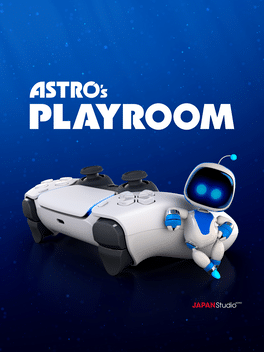
Astro’s Playroom
Every bit as charming as you’ve been led to believe, Astro’s Playroom is a focussed blast of nostalgia that doesn’t outstay its welcome. Not all the unique control methods work – the monkey climbing and ball rolling were a bit of a struggle – but it’s still a decent showpiece for the new controller. Time trials were pretty unnecessary, though.
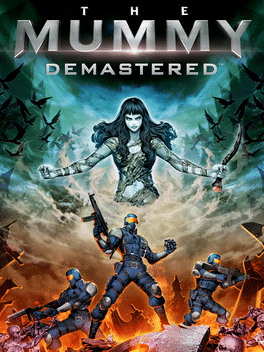
The Mummy Demastered
A quality metroidvania, this really shines aesthetically: gorgeous chip(-esque)tunes and pixel art are only really let down by (what felt like a) poorly-weighted second boss. Additionally, there’s a bit of a Dark Souls-y recover-your-goodies mechanic when you die, which can be problematic: there’s a bunch of chatter online from people who died in a tricky area and essentially trashed their save, since they were unable to recover their hard-earned skills. Save-scumming works, but it definitely is a mechanical shortcoming.
Still, it’s not too long, brilliantly suited to the Switch, and pretty easy to 100% both the map and collectables. Well worth a punt, if you’re in the mood for a metroidvania.
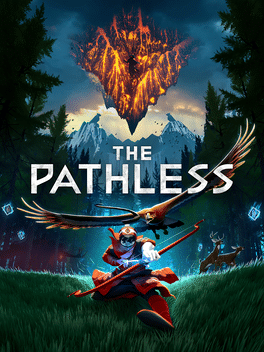
The Pathless
I really enjoyed revisiting The Pathless on the PS5 (after Com-PETE-ing it on the PS4 last year), but I was alarmed at how much more jarring the stealth sections felt. They present a massive shift in tone: exploring the world and solving the environmental puzzles is fantastic fun, but to be shoved into a grim and tense stealth environment on a semi-random whim really kills the vibe.
So, instead, it became a meta-game to avoid those encounters entirely. I faced the bare minimum required to snaffle the required trophy, but thereafter spent ages circumventing that ominous red cloud.
Com-PETE-ion objectives: all Trophies, naturally, but I really rinsed the world hunting lanterns, lore, and even the nautilus shells to unlock the little in-game nod to Abzu.
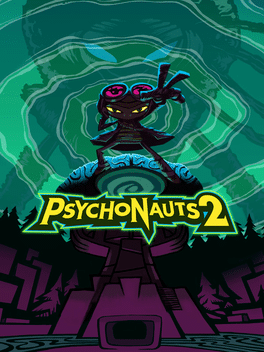
Psychonauts 2
My third Com-PETE-ion of Psychonauts 2 (on a third platform – the PS4 this time) in a touch over six months revealed a few little niggles: there’s a couple of levels that I genuinely wasn’t looking forward to tackle again, and the opening is a touch slow.
But you know what?
It’s still a bloody great game. The writing is as good as it gets, and the amount of love and care that has been poured into this game is evident. And it’s still fantastic fun to play and inhabit that wonderfully realised world.
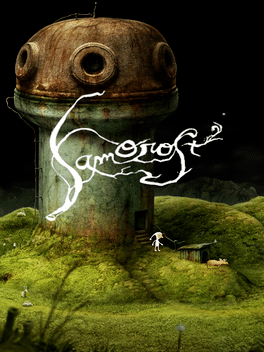
Samorost 2
Acquired as part of a Humble Bundle, and Com-PETE-d in 2015, I recently discovered that Samorost 2 had received a significant update in 2020 which added Achievements.
I’m not a fan of Amanita Design’s pixel-hunting adventures, so I grabbed a guide and smashed through the game in a little over half-an-hour. Achievements achieved, game off The List. Again.
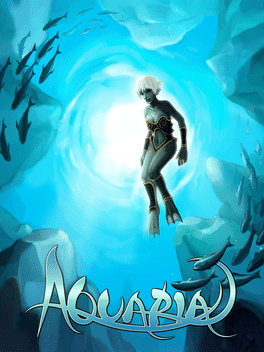
Aquaria
Another Humble Bundle acquisition, Derek Yu’s association with this game had me looking forward to checking this out. But I kinda wish that I checked it out back-in-the-day, closer to its 2007 release… whilst there’s some cool control mechanics here, the lack of a more conventional twin-stick configuration makes the opening hours of Aquaria feel disconcerting.
It looks… fine, if dated. It’s aurally… fine, but dated. Narrative is pretty ordinary, voice-overs more so, and some of the boss fights felt clunky (with some glitches in the final boss fight(s) making it feel patently unfair).
In all, I’m happier having Com-PETE-d Aquaria (all achievements, “true” ending) than I was playing it. Hopefully that’s not a trend this year.
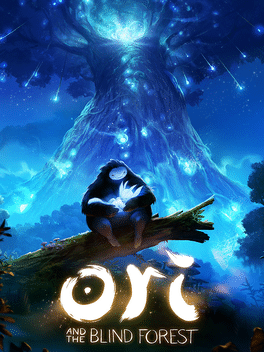
Ori and the Blind Forest
Returning to mop up Achievements on the original (not the Definitive Edition) Ori outing, I discovered that I had three things to do: complete the game in less than three hours, complete the game without buying any optional upgrades, and complete the game without dying.
Sounded like one playthrough and a whole lot of save-scumming.
It turned out to be relatively straightforward, and not too onerous – though admittedly, some of the save-scumming was irritating, especially before I figured out what was causing the game to hard-lock my One X half the time. But Ori is a pretty awesome game, as long as you don’t break your controller during the handful of non-stop escape sequences.
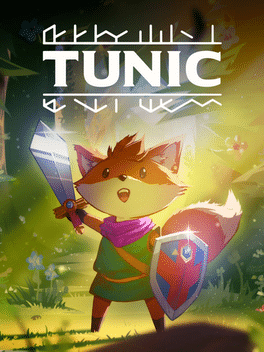
Tunic
Less a Foxy Zelda than a Foxy Fez, Tunic is absolutely brilliant for a vast majority of its length… right up until you hit that Third Boss (whence the combat will provide a seemingly unsurmountable roadblock), or encounter a puzzle that you simply cannot figure out.
The combat problems are easily subverted (with a generous fail-safe mode), but some of the puzzle solutions are best described as painfully obtuse – hence the Fez comparisons. But the time spent before consulting a guide – in my case, about 25 hours – is incredibly satisfying, making Tunic a sure-fire hit in my eyes.
(Com-PETE-ion is a tough one, because the presence(?) of an ARG(??) throws me for a loop. All Achievements seems a good target.)
Edit: Com-PETE-d this on the Xbox, too. All collectibles – items, fairies, cards – and Achievements. It’s still a cracking game.
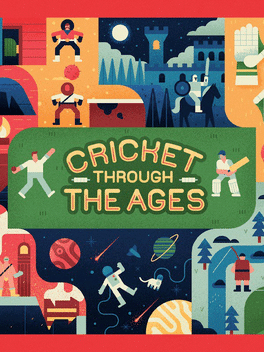
Cricket Through the Ages
It’s just as well that I can’t remember who recommended Cricket Through The Ages on a podcast, because then I’d feel obliged to mentally ban another person from my recommendations list. It’s not that the game is bad, per se… but it is very much a casual phone game.
Shallow in content and mechanics, it does manage to conjure a smile or two, but there’s too much RNG in the gameplay to make the scant Achievements fun. Having said that, there’s some opportunities for some quick two-player floppy-physics tomfoolery.
Definitely not worth getting Apple Arcade for (glad I had a trial), but if you’re already committed to the service then there’s no harm trying it out. Just don’t expect anything deeper than the opening half-hour of hijinks.
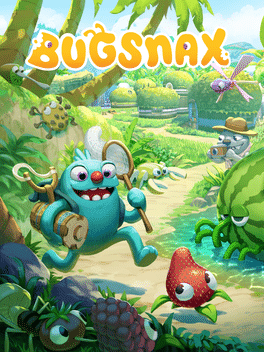
Bugsnax
Bugsnax is a weird example that should be used when discussing ludonarrative dissonance. The surprising emotional turns in the back end of the game feel completely at odds with the bright and colourful aesthetics and inoffensive, mildly engaging gameplay. Yes, the whole is greater than the sum of its parts, but I come away from the game mildly bemused.
Edit: Com-PETE-d the DLC, too. The Isle of Bigsnax seemed to have a much more measured tone than the base game; I think I enjoyed it more. All Mail Quests completed, all Hats collected, all Bugsnax captured – yes, even Cappucceetle.
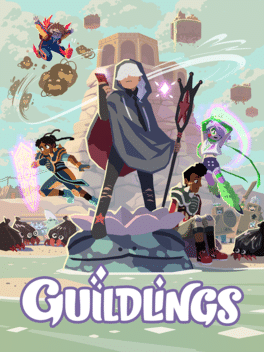
Guildlings
A visual novel crossed with an RPG-(very)-lite, Guildlings proves that it is possible to write contemporary young character dialogue without crawling the skin of older generations. I’ll go so far as to say that I genuinely enjoyed the interactions of the six party characters (even the intentionally-annoying Chazazz), and the NPCs scattered throughout the world are quirky and fun. Gorgeous aesthetics abound, but at this stage there’s only two complete episodes available, leaving the story rather incomplete (though not really on a cliffhanger).
Whilst I’ve done as much as I can with the game at the moment, I’d love to see Guildlings through to its conclusion… but the fact that it’s only available on Apple Arcade (and the “Produced by Apple” line in the credits would suggest that won’t change) means that I’ll probably miss out. Unless the final episode appears by the beginning of June, when my Apple Arcade trial expires…
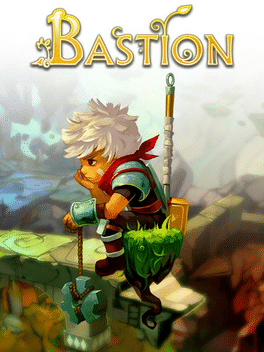
Bastion
I absolutely loved my first exposure to Bastion on the 360 during that fourth Summer of Arcade – the Narrator is a presentation master-stroke, the audiovisuals are sublime, and the gameplay was rock-solid. A great start for SuperGiant!
Returning to a Humble-acquired Steam-delivered Bastion was, likewise, a wonderful experience… until it came time to beat the Dreams with all of the difficulty-increasing Idols enabled. That pushed the gameplay from “a fun romp” into “boldly challenging” – thankfully, though, there’s some good videos out there that provide solid tactics.
Still a great game!
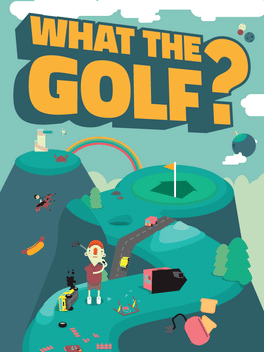
What the Golf?
Moving stuff around on my Switch, I inadvertently fired up What the Golf? for the first time in two years… only to discover that a bunch of levels had been added.
Which was a great excuse to become re-acquainted with the sheer fun and madcappery in this game. The new levels were fun: the sports-focussed events were a joy, though the rhythm-based game felt a little loose in its tuning. The real star was the multiplayer mode – we had a ton of fun in head-to-head battles utilising WtG‘s wacky physics. HockeyDog FTW!

Ellipsis
Alex’s Quick Look enthusiasm on Giant Bomb sold me on this game, even though I’m not usually one for games that are dexterity tests. And whilst Ellipsis reminded me more than a little of Quedex (an old C64 game, also known as Mind-Roll in the US), it proved to be far less annoying… and far prettier.
Best played with a mouse, the 158 levels are relatively straightforward to complete… getting five stars on the levels, however, is another matter. Once I’d learned to modulate some mouse-wrist-flicks, there were only a few levels that provided a formidable challenge… but one in particular was a real roadblock. Once that fell by the wayside, all Steam Achievements were achieved, and I wrapped Ellipsis up feeling pretty good about myself (and the game).
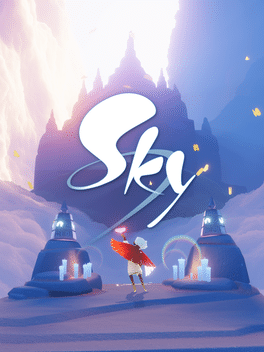
Sky: Children of the Light
I dug flOw and Flower, and adored Journey, so Sky – which owes more than a little to Journey for its graphical stylings – should be right up my alley, right?
Well… hmmmmm. Playing solo, Sky never really gets more than “interesting”, but it really doesn’t want you to play solo. It wants you to be social, to communicate (via gestures or awkward in-game text) with others to accomplish its small tasks.
This semi-forced social nature of the game, coupled with the fact that it’s available free-to-play on mobile devices, leads to the bulk of its players appearing to be… well, young. And so I feel reminded of Kind Words – there’s an perceived need to co-operate that feels fake, but not in the way that (say) Achievement boosting feels fake. But it still feels icky to me, and – alongside the frankly aggressive microtransactions and multiple tiered currencies – pushes me away from the game.
Com-PETE-ion on this one was silly – I made sure I had collected all the unlockables from the spirits in the main areas of the game. Yes, there’s all the special Events and their spirits, but they appear randomly and are just not worth it. It’s fun to potter in Sky, but annoying to flesh out.
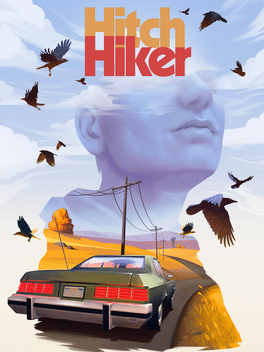
Hitchhiker
A series of five scenes in which you cajole the eponymous character through Lynch-ian conversations with a series of characters who are helping(?) you regain your memories(??). Hitchhiker is short, oblique, solidly entertaining, and has just enough interaction to lift it out of the “visual novel” basket.

LEGO Builder’s Journey
I’m currently in the midst of reconstituting the step-kids’ Lego collection… at least 65 sets, half instructions, one box. And I’m actually finding that to be “fun” in the same way that levelling Chrono Trigger to max stats for every character is fun – a grind, to be sure, but satisfying.
Builder’s Journey, on the other hand, is almost the exact opposite. It’s surprisingly brief, and at no time was there any real challenge – just point-and-click until it works. But there is a surprising narrative in there (let’s talk about the workplace and labour relations!), and it looks gorgeous – I almost left it in the ray-tracing mode that slowed play to around 2 fps because it looked so good.
Builder’s Journey was pleasant, but very slight… but it did leave me wondering how many other games on my backlog were of similar quality.
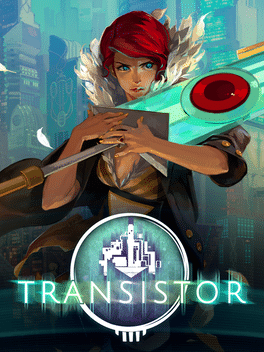
Transistor
Boy I loved Bastion… and boy, was I keen to play Hades. But somehow it didn’t seem appropriate to play the latter without at least peeking at SuperGiant’s second isometric odyssey.
And what a brilliant game it is! Initially a little slow and foreboding, the ability to mix real-time and turn-based combat is a great exercise… and the options available to mix up weapon functions are seemingly endless. Lush visuals and enthralling audio only add to the experience, but the exploration within Function() combos is key. Nothing beats the Void(Crash(),Spark()) + Mask() + Tap() combo ;)
I absolutely loved Transistor. As a “difficult second album”, it ranks right up there with TFF’s “Songs From The Big Chair”!
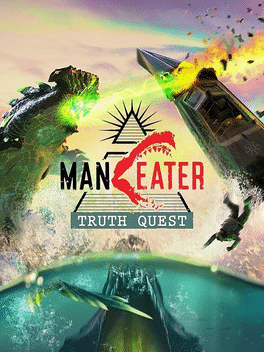
Maneater: Truth Quest
I jumped back into Maneater to Com-PETE the Truth Quest DLC… and initially it was pretty disappointing. The new area seemed unreasonably difficult, the new unlocks next-to-useless, and the writing felt… well, more pro-conspiracy mongers than against.
Familiarity can breed respect, however, and as I pushed through the DLC it seemed to return to the fun-loving cheekiness of the base game. The writing definitely took a ridiculous QAnon-ish turn that had a pleasing denouement, and the back end of the game proved to be a smoother power-trip than the original. Still, it never really hit the heights of the base game… but that seems to be the way of most DLC these days. #RIPFirstUnit
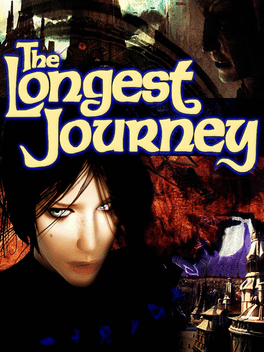
The Longest Journey
This was one of the first games I ever picked up in a Steam Sale back in 2013, after having listened to over a decade of praise for it. But you know what? In 2022, there’s very little to recommend in The Longest Journey, especially for more aged players.
The presentation of the game leaves the player no choice but to pixel-hunt for objects, and items and exits are often out of view in scenes (which have no obvious indicators that scrolling is available). To be fair, some of the story does ring true of an eighteen-year-old protagonist – “love” for secondary characters is freely stated and never earned – but April Ryan leaves a maelstrom of ruined lives behind her, with seemingly little burden for her actions.
(Very) early on, one of The Longest Journey‘s obscure puzzles gave me an excuse to look at a walkthrough… and that walkthrough stayed open as I played. Those “puzzles” created more frustration than they could ever reward with completion, and the narrative was not strong enough to regard my playthrough as a worthy visual novel. Ultimately, I finished The Longest Journey, read April’s diary, checked out the bonus material, and will never open that game again. Not recommended, and I think it may have turned me off point-and-click adventures for good.
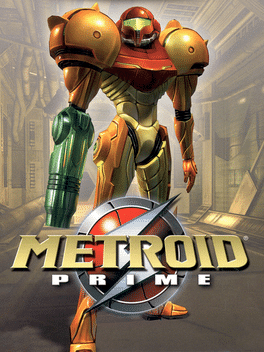
Metroid Prime
Metroid Prime was actually the first Nintendo game I ever owned! I bought a black Gamecube & Prime bundle on its release in Australia after a glowing review in Edge (and in anticipation of Minter’s sadly-canned Unity), and it wasn’t until I tried saving my initial forays into Metroid that I discovered that a memory card was required. My first console, the original Xbox, didn’t need a memory card! ;)
Anyhoo, Metroid Prime was utterly enthralling… right up until I hit the Omega Pirate boss, which became an object lesson in frustration. Once he was bested, the Meta Ridley and Metroid Prime bosses were tough, but fair. Normal mode complete!
But then I discovered that there were additional art galleries in the game that needed unlocking… so I started Hard Mode. And that was smooth going… up until the Omega Pirate. Again. And this time I was stuck.
That was 2005. In 2022, I decided to try again. I did my requisite research, and discovered that many strategies had been discovered in tackling the Omega Pirate… and whaddaya know, one of them *totally* worked! Meta Ridley was an exercise in call-and-response, and Metroid Prime was going well…
…but then came the final phase of the final boss fight. What a shitty, unbalanced, panic-inducing shit-fest that battle is. But… it’s done now. Galleries unlocked, original Metroid played (to the bikini ending), and Metroid Prime is Com-PETE-d.
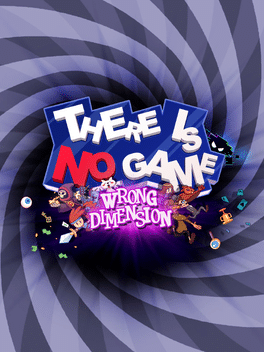
There Is No Game: Wrong Dimension
If The Longest Journey turned me off point-and-click adventures, There Is No Game re-attracted me to the genre. Sure, some of the puzzles can appear to be as obtuse as TLJ‘s bullshit, but the ways in which the game steps outside convention are consistently amusing.
The rest of the game’s writing really hits the mark, too – the emotional turn of the main narrative is earned, and the later chapters have a terrific payoff. In all, TING:WD is a fabulous little adventure that respects your time… and your sanity.
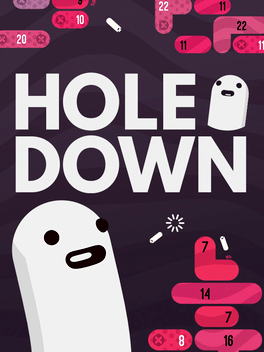
Holedown
My SO plays some real trash games on her phone, and she plays them a lot: she’s over five thousand levels deep in Candy Crush, there’s some new game featuring cubist bears, and there’s the only game that interests me a little: Bricks Ball Crusher, an incredibly crude-looking Breakout-ish thing with multiple balls and powerups and bricks that require many (hundreds of) hits before breaking.
So I’ve watched her play a handful of the three thousand levels she’s completed, and I’ve often though “Yeah – I could go for something like that.” And then, whilst away on holidays with nowt but an iPad for gaming, I discovered that I already owned Holedown… and that completely scratches the same itch.
Holedown‘s top-down Breakout vibes has a great sense of progression, some grin-worthy moments of power, and is super-satisfying over its short duration. You could brute-force your way through the game in less than a handful of hours, but the Achievements are a completely different story – you may not get any of them on a complete playthrough! But it’s still fun to contrive the situations required to pop those cheevos, and I finished Holedown inside two days completely satisfied.
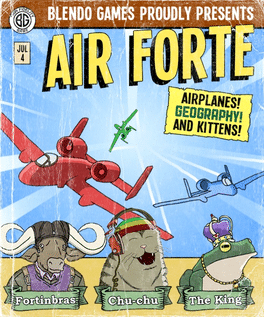
Air Forte
Look – Air Forte is an educational game that I only own because it was in a Blendo Games bundle that I bought for Thirty Flights of Loving and Gravity Bone. But it is a game, it does have Steam Achievements, and I felt compelled to finish it.
Which is super sucky, because the game is a proper bitch. It doesn’t scale graphics to the screen size, so playing at a decent resolution actually renders many Achievements impossible, even if the RNG falls in your favour. Playing at low resolutions increases the chances of insta-death spawns, which are ridiculously frustrating. Interesting surf-guitar renditions of Christmas carols, though.
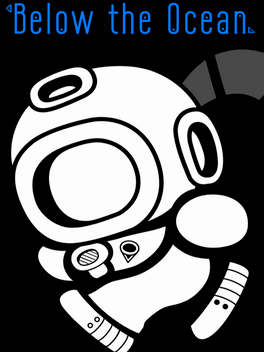
Below the Ocean
A beautifully petit little platformer with neat mechanical gimmicks and svelte puzzling. Cheap, short, and lovely. Totally recommended.

Hellblade: Senua’s Sacrifice
If I had to choose one word to describe Hellblade, it would be “harrowing”. The audio is beyond superb, creating an incredibly unnerving atmosphere that is accentuated by the visual effects. The puzzles aren’t very involved, and the combat is simple (but solid), and the whole is definitely more than the sum of its parts.
A great game that I hope to never play again. Oh wait, I’ve got it in VR, too… *shudder*.
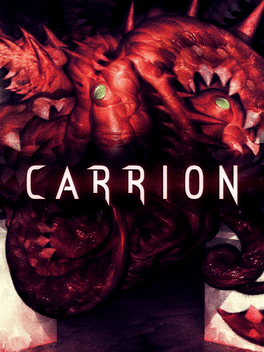
Carrion
Carrion is a little bit of horror, a little bit of metroidvania, and a lot of fun. It kinda feels like a tech demo for speedy, gloopy character movement that’s been thoughtfully rolled into a short (but sufficient) game… and that movement is *so* satisfying. The game makes you feel almost omnipotent as the monster (apart from a few moments in the closing stages), and the result is a gorgeous little romp. The (free!) DLC – an additional Christmas-themed level – maybe lacks the polish of the main-game levels, but is still a fun excursion.
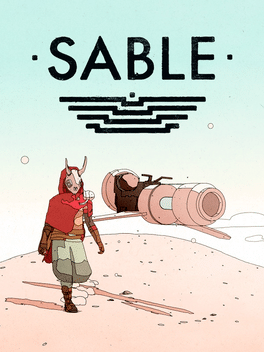
Sable
A combat-free, chilled-out explore-and-collect-athon, Sable makes a stunning first impression: graphical stylings and low-frame animations on the titular character create a real lo-fi vibe. But there’s tons of detail in the environments, and even more heart in the writing. And whilst the game is pitched as a coming-of-age story (with Sable attempting to discover her calling through her interactions with her world), it’s still vaguely relevant to this fifty-one-year-old bloke going through a midlife crisis.
Whilst there’s a few too many stutters (both audio and visual) to honestly say that Sable plays like a dream, it is a very satisfying world to explore. Well worth it… unless you’re one of those peeps that cannot handle the low animation framerates.
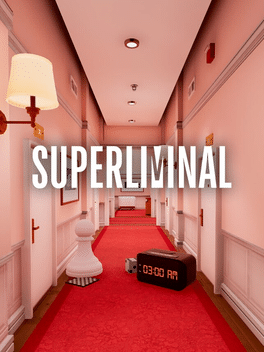
Superliminal
Superliminal loves to play with subversions of the visual plane, and I found that the puzzles that resulted ranged from the obvious to the maddening. However, they all managed to generate a real lightbulb moment of gleeful appreciation.
Were it not for the non-trivial (30 minute!) speedrun achievement, I’d say that Superliminal doesn’t outstay its welcome. But that speedrun took a few too many attempts, and I feel that I’m far too familiar with the game’s levels now. Still, Superliminal is well worth a look, if only for those initial WTF moments of realisation.
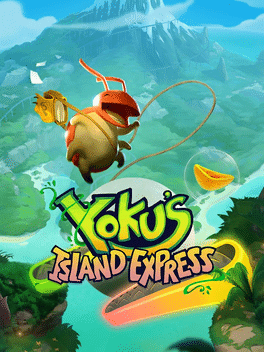
Yoku’s Island Express
In 2021, I picked up Yoku’s Island Express on the Switch (at 75% off), and had a great time.
In 2022, I picked up Yoku’s Island Express on the Xbox One (at 100% off, thanks to Games With Gold), and had a great time. It turns out that Metroidvania x Pinball is a totally viable genre.
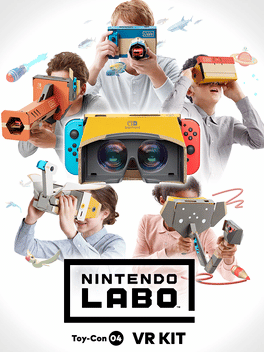
Nintendo Labo Toy-Con 04: VR Kit
I was completely smitten with the sheer balls shown by Nintendo when they announced their Labo experiments… doubly so when the VR Kit was announced. Cardboard VR? Powered by a Switch?
You know what? It totally works, albeit with a very restricted scope. The VR is effective – no real surprise there, after the 3DS’ lenticular success – and about half of the Labo constructions actually make the headset comfortable to use.
There’s plenty of content in the package, and that provided much OCD-ish gnashing of teeth. So yes, I played (and finished, wherever possible) all the Plaza experiments… I even dug through the Garage code to figure out what was going on in some of them! The more authored “games” centred on the Labo devices were mostly pretty easy to finish, but the Bird Dash courses provided a bit of a challenge.
Most successful, though, was the VR Blaster – a large cardboard pump-action gun that you held up to your face for the VR visualisation. The contraption was engaging, and the Blaster game itself was genuinely challenging – speed and accuracy was necessary to hit those Gold Medal scores! The Expert Quick Play medals were equally tricky, and totally rewarding.
Is Labo VR a Quest (or even PSVR) killer? Hell no – the Switch’s resolution is too screen-doory for that. But is it good enough for the experiments that Nintendo included? Absolutely.
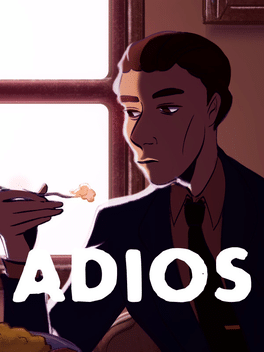
Adios
A delightfully macabre – yet surprisingly sensitive – character reckoning tale, presented as a visual novel. A lovely graphical style & classy voice acting are let down by occasional scripting bugs that trap characters in the scenery and halt progress. Still, a solid western VN that’s totally worth experiencing.

Immortality
I loved Her Story, and Immortality drew me in straight away. And whilst I much preferred Her Story‘s text-based search mechanism over Immortality’s screen-scrubbing item hunts, I was still totally sucked into the worlds surrounding the three movies of Marissa Marcel. The post-credits clip hunt, however, was a mild exercise in frustration, with random clip connections making me feel like I was wasting time.
Pretty good game, though.
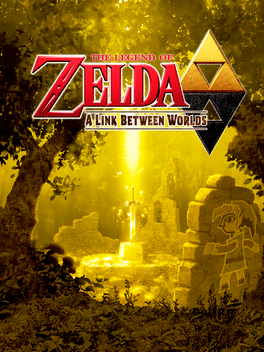
The Legend of Zelda: A Link Between Worlds
This may have been my favourite Zelda prior to the release of Breath of the Wild… it’s utterly sublime, and runs like a dream on the 3DS. It’s only when one decides to become the Cucco-Master – surviving the cucco minigame for 1000 seconds – that it shows its less favourable side.
So my 3DS’ Start button is now basically trashed, after I mashed it endlessly to get a type of slow-motion gameplay to get those 1000 seconds in. Normal mode was… okay, but Hero Mode was bloody insane for the first 300 seconds. Thankfully, it felt easier for the rest of the run, and as a result you can call me a Heroic Cucco-Master.
Bloody brilliant game… well worth owning a 3DS for.

7 Billion Humans
As a fan of KK&A’s work since World of Goo, I picked up Human Resource Machine on the iPad. Now, in a former life I was a code-cutter, and I loved nothing more than optimising the shit out of a chunk of under-performing code… so HRM was like the most heavenly, rewarding work for me. I loved it to bits. Picking up Tomorrow Corporation’s entire catalogue on Steam gave me a great excuse to play HRM (and World of Goo, and Little Inferno) again, but I tucked 7 Billion Humans away for the moment when I wanted my code-brain to be tickled.
7 Billion Humans is aesthetically identical to HRM – no problems there. But whilst HRM leverages liner code structures, 7BH plays with the idea of massively multi-threaded programming – which means that you have to consider multiple instances of your code running at once. And the puzzles that result from that approach just weren’t as compelling to me: my initial attempts were always full of if-statements to nail down a particular instance’s workflow. These were often speedy solutions, but hideously convoluted and onerous to write and edit. I don’t mind admitting that I had to look up solutions for around half the small-code optimisation targets, and whilst I could understand the multi-threaded code when I read it, I have to concede that I wasn’t going to arrive at those solutions by myself.
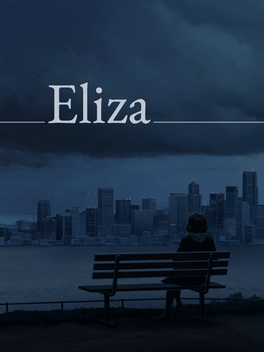
Eliza
As mentioned above: in a former life I was a code-cutter, and a pretty good one, too. Then came the first stress breakdown, a nervous return to the coal-face, and the second breakdown. After that, I consciously distanced myself from the meatiest of the action, and am now otherwise engaged (or not).
Long story short: the workplace aspects of Eliza rang true for me, and a couple of years of therapy made the counselling bits of the story feel legit, too. And I remembered enough about Eliza and natural language processing from my fledgling AI studies in the 90s (and from emacs, too… M-x doctor, emacs fans!) to recognise the “tricks” in the game’s eponymous instance. And that all made the experience of playing Eliza an utterly absorbing and moving experience: there was one choice screen that left me staring at the screen in fearful paralysis for five minutes.
Recommended.
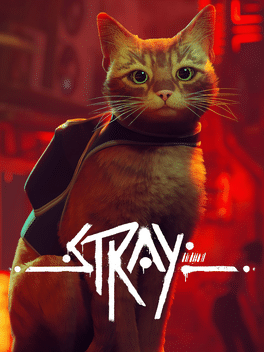
Stray
Cats are an invasive species in Australia, responsible for (amongst other things) the endangerment of many native marsupials and birds. I’ve never really been a fan of cats in general, and certainly not after my brother’s second cat decided to help itself to my pizza… but the intensity of the gushing over Stray saw me clicking that “Buy” button on PSN with more than a little trepidation.
And… well, the game’s not great. The mechanics of the game itself felt clunky and sticky, though maybe that’s just a play on the stereotype of a cat’s problematic independence? The model of the cat protagonist – that had others cooing in delight – felt absolutely unconvincing to me, and our dog couldn’t have given less of a shit. Wonderful atmosphere and characters, though, and the audio was pretty good, too.
Somewhat reluctantly, I played through both the PS4 and PS5 variants of the game, grabbing all the Trophies (including those shitty don’t-get-touched races) and collectibles.

Before Your Eyes
I’m happy to give any alternative control method a bash, but I happened upon Before Your Eyes in the short period of time when the failure of an online process prevented the Windows version from initialising cameras properly. Frustration ahoy! I was able to get into the game on my Mac, but it really laboured under the load of the game… eventually, though, the game was patched, and I was able to use my beefier PC.
And I was glad I did. What a great game! Terrific story, great audiovisuals, and a mechanic that really messes with you (especially when the tears come… and yes, they will come). The subject matter made me think (spoilers!) of That Dragon, Cancer – and while that’s not a particularly apt comparison from a story perspective, the manner in which it was sensitively integrated into a game framework is clearly superior here.
I played through Before Your Eyes a few times, using a mouse to fully explore dialogue trees and little side paths that I otherwise blinked through. A thoroughly engaging and thoughtful experience.
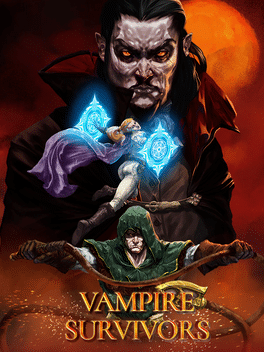
Vampire Survivors
It’s pretty hard to go past Vampire Survivors as GotY for 2022 – it does NUMBERS and COLLECTING THINGS better than anything else in ages. It’s immediately rewarding, and then some mechanics get revealed and you think “Wow, that’s going to take ages” and you discover additional levels of currency and further mechanics and all of a sudden you’re pulling off farming runs that would cover your initial estimates in seconds.
Bloody hell it’s good.
So – I got all the Steam Achievements, but I pushed on and got all the Secrets and Bestiary entries as well. And collected a ton of Golden Eggs, too. Like, 1000+ per character. For all 40 (well, 39) characters. I’m an idiot, but a very happy idiot.
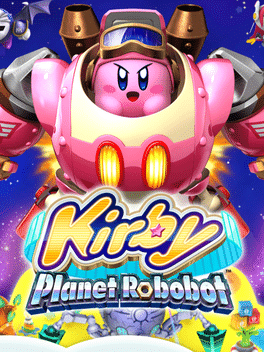
Kirby: Planet Robobot
Planet Robobot looked cheery and fun and I started it whilst on summer holidays a few years ago and thought “wow, this is really easy.” Finished the game, got all the collectibles – yep, easy. But my save file didn’t say 100%…
Oh, additional game modes! Cool. Meta Knightmare Returns? No problems. Team Kirby Clash? Pretty easy to platinum that. Kirby 3D Rumble? Last level was a bitch to platinum, but otherwise straightforward. The Arena and The True Arena?
Oh, fuck right off.
The True Arena especially. Struggle to the final part of the level – no mean feat, let me assure you – only to have a post-battle one-hit-KO event?
So mean. So very mean.
But it’s off The List now. And the Swear Jar is almost overflowing.
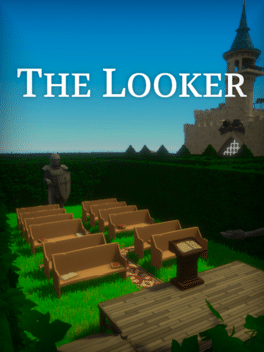
The Looker
I love The Witness. And, for a pisstake, this feels a lot like more of The Witness. Sure, it’s juvenile, but not eye-rollingly so… there’s one slightly tricky Achievement, but otherwise this is a totally worthwhile way to spend an hour or two. Stonking final puzzle, too.
And now I want to play The Witness again.
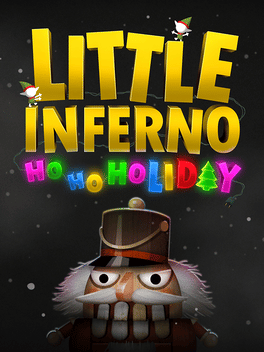
Little Inferno
Little Inferno was the second game I played on my WiiU at launch (and the first one I actually bought), and I loved its wacky take on consumerism then. I played through it again on Steam in 2019, but the recent release of some DLC (and Steam Achievements!) encouraged me to fire it up and Com-PETE it again.
The DLC snakes another storyline into the game – it’s not as smooth as the original, but it still works well. It’s pretty straightforward to snaffle all the Achievements (especially for someone on their third or fourth playthrough), and the snark is still there. Recommended, especially for the pittance that it costs.
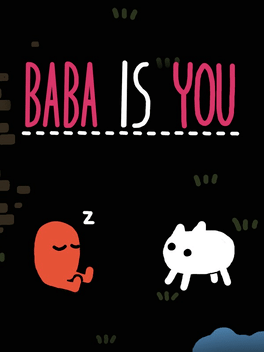
Baba Is You
Bloody hell, Baba Is You was utterly brilliant. Inventive, clever word-and-block-shuffling puzzle heaven…
…for the first third of the game. And, truth be told, my partner and I struggled a fair bit with the last dozen of those levels. Thereafter, the puzzles became… well, inscrutable. I eventually succumbed to temptation and looked at a guide… and was immediately vindicated when solutions seemed to require overlapping text blocks (which I didn’t even know was a thing), cunning timing (which I had desperately hoped wasn’t a thing), and more circuitous thinking than I could ever muster.
I copied my way through the rest of the levels with equal amounts of amazement and bemusement, nabbing all the meta-goodies on the way. The two additional level packs – Museum and New Adventures – were similarly handled.
Baba Is You is wildly creative and fiendishly clever… but far too clever for me.
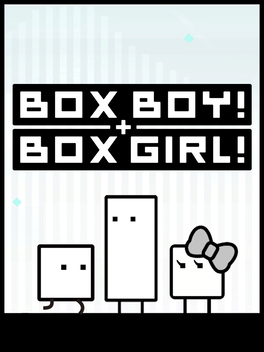
BoxBoy! + BoxGirl!
I love me some BOXBOY, having devoured the three 3DS variants back in 2019(-ish). This release is more of the same, with a handful of additional mechanics that increase the opportunity for puzzling… but can also frustrate when they’re not usable.
There’s three separate gamestyles – One, Two, and Tall – and it’s the Tale For Two that provides the most enjoyment, with my partner being enlisted and performing admirably. None of the levels are overly tricky, but my desire to S-Rank every level (leading to S++-Ranks for each of the Tales) delivered some devious shortcuts.
Enjoyable puzzling, decent sound, and it looks *gorgeous* on the OLED Switch… BOXBOY! + BOXGIRL! is highly recommended… especially if you’ve got a partner you can rope in for some couch co-op.
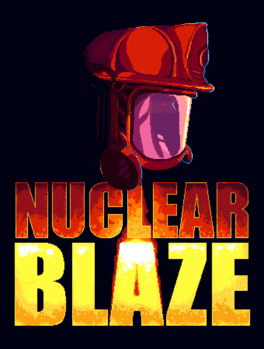
Nuclear Blaze
With both this and Below the Ocean, I’ve had a great time with short & punchy titles this year. Nuclear Blaze has a great fire-fighting mechanic which is super-satisfying to use, and my first playthrough was a largely frustration-free pair of hours. A second playthrough – for the Hold My Beer DLC, which cleverly modifies the existing levels for a markedly different experience – was still a rollicking good time, and the game was on and off The List in a day. Totally recommended.
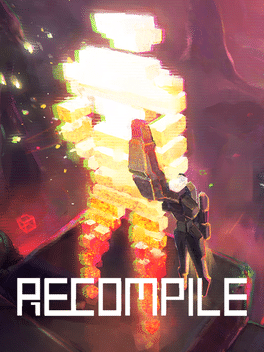
Recompile
A great little neon-fuelled cyber-metroidvania. Respectfully short, there’s no real difficulty spikes – even the boss fights, which seem to offer plentiful cheese options – and the game never outstays its welcome. Well worth a look if you’ve got that metroidvania itch.
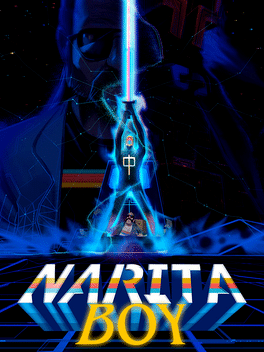
Narita Boy
Narita Boy is a textbook example of style-over-substance. The 2D adventuring and platforming feels indistinct and woolly, and combat can feel a little mashy and repetitive at times. The narrative almost works, but it seems like an incredibly personal story in need of a dispassionate editor.
But this instance of style-over-substance can almost be excused, because Narita Boy has STYYYYYLE (in capital letters). The retro-futurist aesthetic looks stunning, CRT-murky and detailed at once, and audio is brilliant, with some solid 80s synths. And whilst there’s a bit of enemy and attack progression through the game, it’s just a shame that the button mashing never really goes away. Sure, I enjoyed my time with Narita Boy, but can’t see myself ever returning to it.
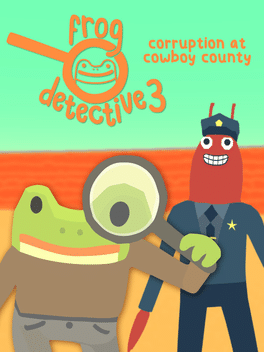
Frog Detective 3: Corruption at Cowboy County
I love the Frog Detective games – there’s something wholesome and quirky about them that’s only enhanced by the faintest hint of Australiana that Grace Bruxner imparts in the narrative. This third outing of the eponymous hero(ine?) doesn’t deviate much from the formula of its predecessors, but that’s not a problem at all.
But there were two genuine, full-on gut-laughs that I had that made me super-glad this game exists: the “additional” credits (no real spoilers here!), and the surprising “rant” (well… as much as the Frog Detective vibe allows, anyway) against the prison industrial complex.
Oh, and the self-referential chuckles about how short the game is hit the mark, too. Brilliant stuff :)
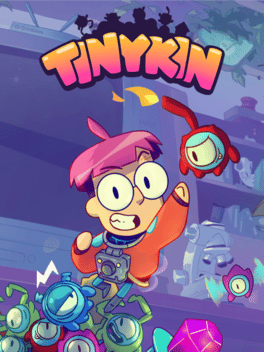
Tinykin
I’m halfway through a part-time Pikmin 2 playthrough, and the similarities to Tinykin are unmistakeable. But while Tinykin plays better – faster, smoother, and more responsive – the rest of the package feels incoherent.
Pikmin‘s worlds are human worlds inhabited by tiny beings; Tinykin‘s environments, whilst chock-full of puzzles and challenges, merely feel like they’ve got familiar textures slathered upon them: no kitchen, bedroom, or bathroom looks like this! The narrative is slight (and clumsily delivered), and for a fair chunk of Tinykin‘s short length I felt like I was engaged in busywork.
Yes, the moment-to-moment gameplay of Tinykin is fun… but once the game has been switched off, it’s forgotten.
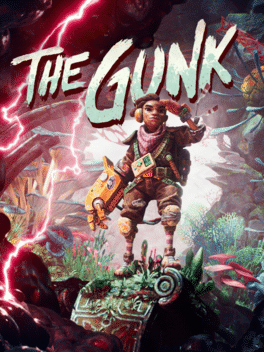
The Gunk
I’m a bit of a fan of Image & Form (the Steamworld Dig games are fantastic, and Heist is great, too), and I was smitten with the announcement footage of The Gunk. Linear-ish action-adventure with a tactile cleaning mechanic? Sign me up!
The narrative is earnest, but clunky, and suffers from being stuck in a short game – character turns never feel earned. But the gameplay is solid – hoovering up gunk never gets old – and the aesthetics are wonderful: gorgeous graphics, convincing audio. In all, it’s an enjoyable and petit little romp that doesn’t outstay its welcome.
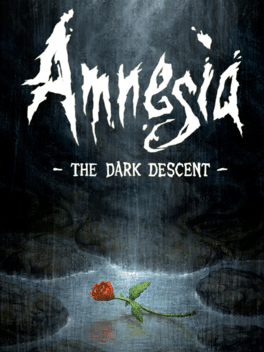
Amnesia: The Dark Descent
I don’t like horror media – I don’t find fear-induced anxiety to be “enjoyable” in any way, shape, or form. Amnesia did nothing to change that: even playing alongside three walkthroughs, knowing exactly what was coming up (and how to handle it), I still found the oppressive atmosphere difficult to engage with… I spent more time psyching myself up to play it than actually playing it. I really liked the narrative of The Dark Descent, though, and the sound design & generated atmosphere is quite clearly effective… just not for me.
The Justine side-story was more approachable, though. Enthralling narrative, few threats, and a not-overly-oppressive atmosphere made that veered towards “enjoyable”. Three runs through that provided a chunk o’ fun, and I also enjoyed the commentary track on The Dark Descent that I checked out on the way to wrapping up all the Achievements.
Never again, though.
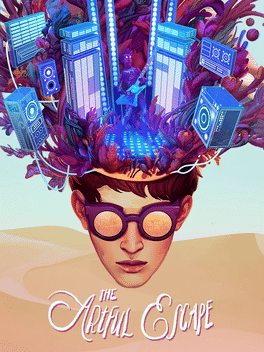
The Artful Escape
As with Heaven Will Be Mine (see above), within fifteen minutes of starting The Artful Escape, I knew it wasn’t going to be for me.
Unlike Heaven Will Be Mine, though, it turns out that I was completely wrong.
Though the dialogue is probably aimed at an audience half my age, it wasn’t the neo-hipsterisms that spoke to me… it was the broader narrative. In the midst of my own identity meanderings, the tale of someone emerging from their external identity cocoon into an exhilarating self-realisation was more than just welcome… it was genuinely emotional.
I wept big, hot, wet tears of joy at the end of this. And whilst the simplistic, no-fail platforming and pattern-matching are little more than functional, the whole package is absolutely gorgeous… and a perfect demonstration of why I insist on playing through everything.
And it’s largely an Australian production. Choice!
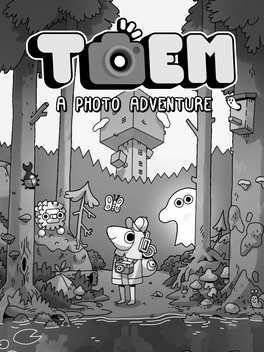
Toem
Toem is a beautiful-looking photography-based collectathon, technically adept and a pleasure to play. But much of the game feels like annoying (but not difficult) fetch quests and busy-work, and I can’t shake the feeling that Toem owes much to A Short Hike (without ever reaching the mechanical or emotional heights of that game).
Much like Tinykin, Toem is enjoyable enough in-the-moment, but easy to put down and forget.